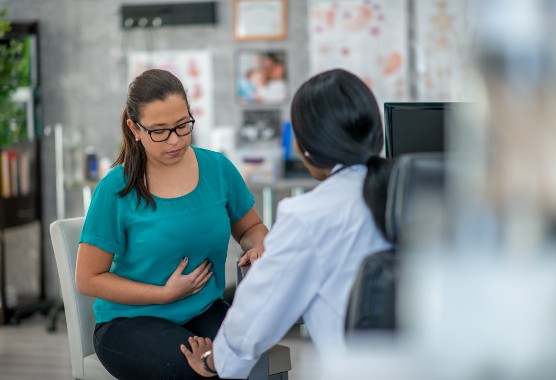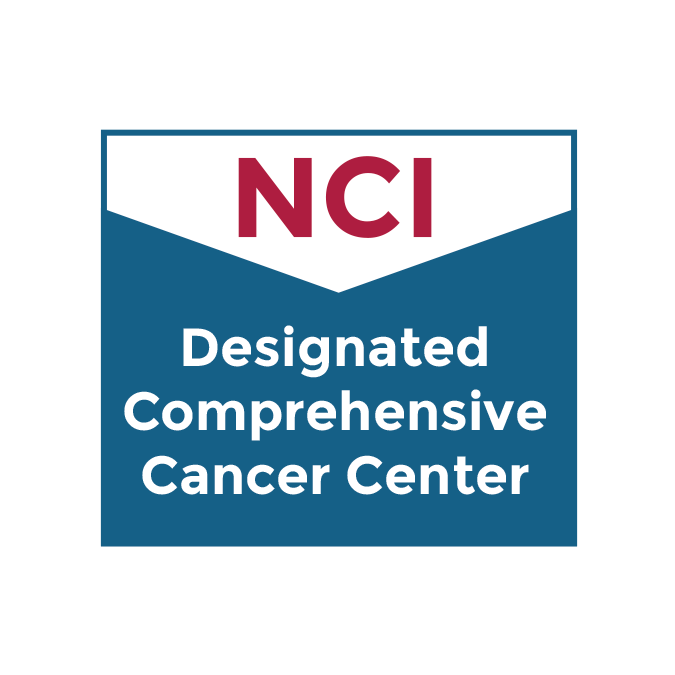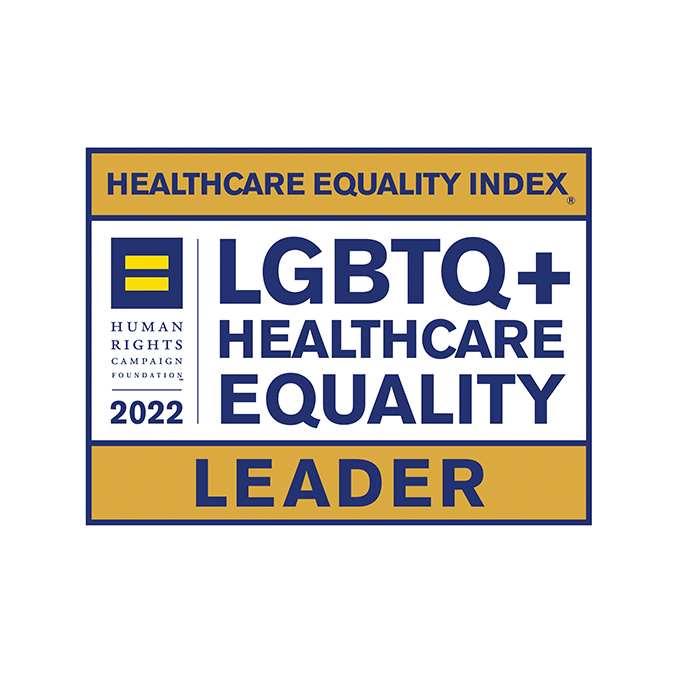Menstrual Disorders
A skilled team of obstetrician-gynecologists helps you manage menstrual disorders at every stage of life.
Medically reviewed by Clara Paik, M.D. on Oct. 12, 2023.

Menstrual Conditions
At UC Davis Health, our obstetrician-gynecologists (OB-GYNs) have extensive experience treating all types of menstrual and hormone disorders. We’re proud to be recognized as one of the top hospitals in the nation in obstetrics and gynecology, according to U.S. News & World Report. We provide the individualized care you need for complete wellness at any age.
What Are Menstrual Disorders?
Menstrual disorders are problems that affect your menstrual cycle. Your menstrual cycle is how your body prepares for pregnancy each month. The cycle starts on the first day of your period and usually lasts about 28 days.
Problems with your period can take many forms. You might have severe cramps or heavy bleeding during your periods. Or you might not have periods at all.
Menstrual disorders can affect your health in other ways, too. Infertility, anemia and osteoporosis are potential effects of menstruation problems.
The most common menstrual disorders include:
Absent Periods (Amenorrhea)
A missed period for several months in a row (not due to pregnancy or breastfeeding) is usually the result of a hormone imbalance such as PCOS. Stress, weight gain, eating disorders and other health problems can also cause amenorrhea.
Heavy Menstrual Bleeding (Menorrhagia)
Heavy or prolonged menstrual bleeding during your period can have a big impact on your quality of life. It can also lead to anemia, fainting and other health problems. Fibroids and hormone imbalances are common causes.
Irregular Periods
Abnormal periods may mean you have short (less than 24 days) or long (more than 38 days) menstrual cycles. Irregular periods are common in teens and in those approaching menopause.
Painful Periods (Dysmenorrhea)
Mild discomfort is common during your period, but sometimes you may experience severe pain, cramps and other symptoms. Dysmenorrhea can be a sign of uterine and endometrial conditions such as endometriosis or uterine fibroids.
Menopause and Perimenopause
You’re in menopause when you stop having periods for 12 consecutive months. Most people reach menopause in their 50s. Perimenopause refers to the transitional years before menopause when your hormone levels are changing.
Menopause and perimenopause are natural stages of life, not disorders or diseases. But they can produce symptoms such as difficulty sleeping, hot flashes and decreased libido (sex drive).
Premenstrual Syndrome (PMS)
About 90% of menstruating people experience PMS in the weeks leading up to their periods. Symptoms may include bloating, headaches or changes in mood. Some people have a severe form of PMS called premenstrual dysphoric disorder (PMDD) that can lead to depression, migraines and other serious problems.
Symptoms of Menstrual Disorders
Menstrual disorders can lead to a range of symptoms that affect your daily life. Make an appointment with your OB-GYN if you experience any of the following problems:
Common Symptoms
- Abdominal pain and cramps
- Absent or infrequent periods
- Depression or changes in mood
- Fatigue
- Feeling or fullness or bloating in your abdomen
- Headaches
- Heavy menstrual bleeding
Menstrual Disorder Complications
Period problems put you at a higher risk for the following health conditions:
Anemia
Heavy menstrual bleeding can lead to anemia. Anemia means your blood doesn’t have enough red blood cells, so your body doesn’t receive enough oxygen.
Depression and Anxiety
Many with PCOS also have depression and anxiety. Mental health conditions can also get worse during PMS or if you have premenstrual dysphoric disorder.
Diabetes
More than half of people with female hormone imbalances such as PCOS or irregular menstrual cycles develop prediabetes or Type 2 diabetes.
Endometrial Cancer
Diabetes, obesity and other risk factors for menstrual disorders also increase your risk of endometrial cancer.
Heart Disease and Stroke
You are more likely to have high cholesterol and high blood pressure if you have amenorrhea (absent periods) or irregular periods. These conditions increase the risk of heart disease and stroke.
Infertility
Conditions leading to menstrual disorders, such as PCOS and uterine fibroids, are common reasons for difficulty getting pregnant.
Osteoporosis
Women with amenorrhea or those who are in menopause have low estrogen levels. Low estrogen weakens your bones and puts you at risk for osteoporosis and fractures.
Causes of Menstrual Disorders
Hormones and your menstrual cycle go hand in hand. Throughout your cycle, hormone levels fluctuate to trigger the different phases of menstruation. Your cycle begins on the first day of your period and ends the day before your next period. Your menstrual cycle prepares your body for pregnancy.
Your cycle has three phases:
- Follicular phase: Your estrogen levels increase, triggering your ovarian follicles to grow an egg.
- Ovulation: A rise in luteinizing hormone signals your ovaries to release an egg for fertilization.
- Luteal phase: Your progesterone levels increase as the egg travels to your fallopian tubes. If pregnancy doesn’t occur, you shed your uterine lining during your next period.
Your hormone levels naturally change during puberty, pregnancy and menopause. But hormone imbalances can affect your cycle, lead to menstrual disorders or cause infertility.
Common causes of hormone imbalances and menstrual problems include:
Cancer or Cancer Treatment
Endocrine or female reproductive system cancers can affect hormones or cause abnormal menstruation. Cancer treatments such as chemotherapy and radiation therapy can also affect your periods.
Certain Medications
Blood thinners, hormone replacement therapy, birth control and other medications may lead to hormone imbalances or menstrual disorders.
Diet
A diet high in salt, caffeine, saturated fat and processed foods can make PMS symptoms and other menstrual problems worse.
Eating Disorders
Anorexia nervosa and bulimia can cause extreme weight loss that can lead to irregular or missed periods.
Stress
Chronic (long-term) stress and anxiety disrupt your body's testosterone, estrogen and progesterone levels.
Uterine or Ovarian Conditions
Uterine or ovarian disorders affect your hormones and menstrual cycle. The most common problems include endometriosis, uterine fibroids, ovarian cysts, polycystic ovary syndrome and primary ovarian insufficiency.
Weight
Obesity increases your risk of irregular periods, heavy menstrual bleeding and ovulation disorders.
Diagnosing Menstrual Disorders
Your healthcare provider will do a physical exam and ask about your symptoms and medical history. If you’re experiencing irregular periods, you may want to start a menstrual cycle log to record the dates of your periods. This information can help your provider make a diagnosis.
Tests for menstrual disorders may include:
- Blood tests to measure hormone levels
- A pelvic exam to check your reproductive organs
- Pelvic ultrasound or transvaginal ultrasound to look for fibroids, tumors, or other abnormalities in your reproductive organs
- Endometrial biopsy to examine a sample of tissue from your uterus for signs of disease
Treatments for Menstrual Disorders
Our women’s health specialists work together to deliver expert care. Depending on your needs, you receive the coordinated input of OB-GYNs, surgeons, infertility specialists, endocrinologists and other providers.
Your treatment plan may include lifestyle changes, medication, surgery or a combination of therapies.
Surgery is reserved for severe menstrual disorders that don’t improve with conservative therapies. Some surgeries affect your ability to get pregnant, so it’s important to discuss the risks of each procedure with your provider.
We specialize in minimally invasive gynecologic surgery. These minimally invasive procedures are alternatives to major abdominal surgeries and help you recover faster and with less pain.
Lifestyle Changes
Adopting a balanced diet, exercising regularly and maintaining a healthy weight can reduce your risk of some menstrual disorders.
Birth Control
Symptoms of PCOS, fibroids and heavy menstrual bleeding may improve with hormonal birth control. Birth control options include the pill, shot, patch, ring or an intrauterine device (IUD).
Tranexamic Acid
A medication called tranexamic acid, which you take at the start of your period, relieves heavy bleeding.
Pain Relievers
Over-the-counter pain relievers such as ibuprofen or naproxen effectively relieve PMS symptoms such as cramps, headaches and abdominal pain.
Hormone Therapy
You may benefit from hormone therapy, especially if you are entering menopause or have irregular periods. Hormone therapy increases certain types of hormones in your body to reduce your symptoms.
Minimally Invasive Surgery
We use minimally invasive laparoscopic or robotic techniques to treat many disorders, including uterine fibroids and endometriosis.
Endometrial Ablation
We offer endometrial ablation for heavy menstrual bleeding. This minimally invasive procedure uses heat to reduce the lining of your uterus so you don’t bleed as much during your period.
“Premenstrual syndrome (PMS)," Office of Women's Health, https://www.womenshealth.gov/menstrual-cycle/premenstrual-syndrome
“Polycystic ovary syndrome,” Office of Women's Health, https://www.womenshealth.gov/a-z-topics/polycystic-ovary-syndrome
How common are menstrual disorders?
25%Experience a menstrual disorder during their childbearing years
How common is PCOS?
1 in 10Have missing or irregular periods due to polycystic ovary syndrome
Sources: National Institute of Child Health and Human Development: How many women are affected by menstrual irregularities?
Office on Women’s Health: Polycystic ovary syndrome
Request an Appointment
As Sacramento's No. 1 hospital, you'll benefit from unique advantages in primary care and specialty care. This includes prevention, diagnosis and treatment options from experts in 150 specialties.
Referring Physicians
To refer a patient, submit an electronic referral form or call.
800-4-UCDAVIS
Patients
Call to make an appointment.
Consumer Resource Center
800-2-UCDAVIS

Ranked among the nation’s best hospitals
A U.S. News & World Report best hospital in cardiology, heart & vascular surgery, diabetes & endocrinology, ENT, geriatrics, neurology & neurosurgery, and pulmonology & lung surgery.

Ranked among the nation’s best children’s hospitals
U.S. News & World Report ranked UC Davis Children’s Hospital among the best in pediatric nephrology, orthopedics*, and pulmonology & lung surgery. (*Together with Shriners Children’s Northern California)

Ranked Sacramento’s #1 hospital
Ranked Sacramento’s #1 hospital by U.S. News, and high-performing in aortic valve surgery, back surgery (spinal fusion), COPD, colon cancer surgery, diabetes, gynecological cancer surgery, heart arrhythmia, heart failure, kidney failure, leukemia, lymphoma & myeloma, lung cancer surgery, pacemaker implantation, pneumonia, prostate cancer surgery, stroke, TAVR, cancer, orthopedics, gastroenterology & GI surgery, and urology.

The nation’s highest nursing honor
UC Davis Medical Center has received Magnet® recognition, the nation’s highest honor for nursing excellence.

World-class cancer care
One of ~59 U.S. cancer centers designated “comprehensive” by the National Cancer Institute.

A leader in health care equality
For the 13th consecutive year, UC Davis Medical Center has been recognized as an LGBTQ+ Healthcare Equality Leader by the educational arm of America’s largest civil rights organization.

